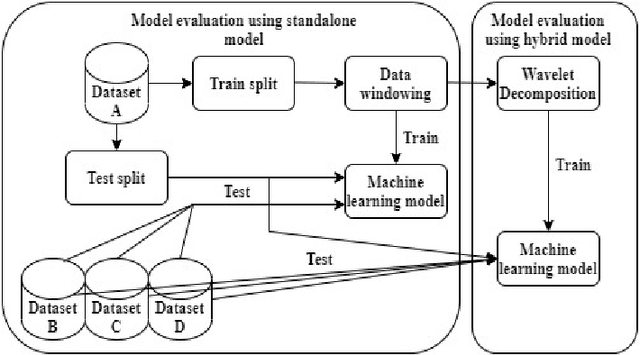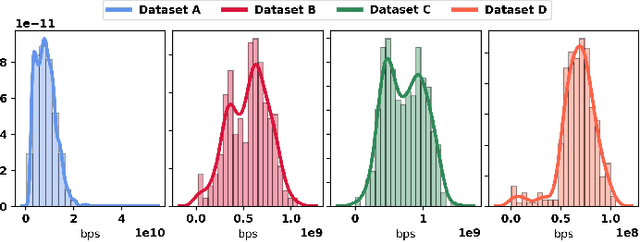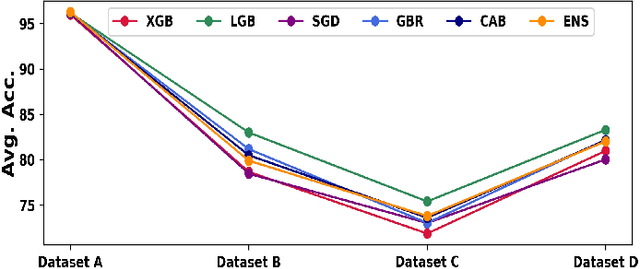Wavelet-Based Hybrid Machine Learning Model for Out-of-distribution Internet Traffic Prediction
Paper and Code
May 09, 2022



Efficient prediction of internet traffic is essential for ensuring proactive management of computer networks. Nowadays, machine learning approaches show promising performance in modeling real-world complex traffic. However, most existing works assumed that model training and evaluation data came from identical distribution. But in practice, there is a high probability that the model will deal with data from a slightly or entirely unknown distribution in the deployment phase. This paper investigated and evaluated machine learning performances using eXtreme Gradient Boosting, Light Gradient Boosting Machine, Stochastic Gradient Descent, Gradient Boosting Regressor, CatBoost Regressor, and their stacked ensemble model using data from both identical and out-of distribution. Also, we proposed a hybrid machine learning model integrating wavelet decomposition for improving out-of-distribution prediction as standalone models were unable to generalize very well. Our experimental results show the best performance of the standalone ensemble model with an accuracy of 96.4%, while the hybrid ensemble model improved it by 1% for in-distribution data. But its performance dropped significantly when tested with three different datasets having a distribution shift than the training set. However, our proposed hybrid model considerably reduces the performance gap between identical and out-of-distribution evaluation compared with the standalone model, indicating the decomposition technique's effectiveness in the case of out-of-distribution generalization.
 Add to Chrome
Add to Chrome Add to Firefox
Add to Firefox Add to Edge
Add to Edge